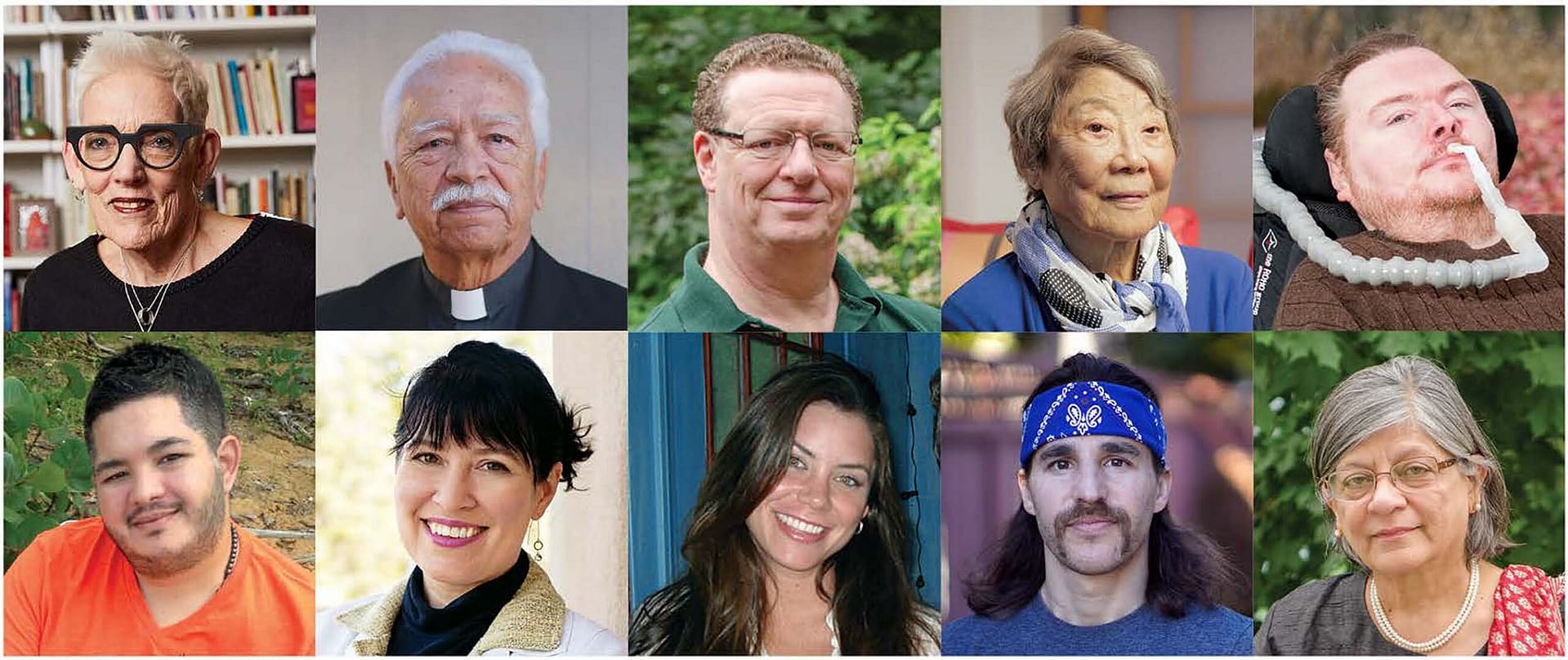Just over 30 years ago, in November 1994, a majority of Oregon residents passed the nation’s first law giving mentally capable, terminally ill adults the end-of-life care option of medical aid in dying. The law survived legal challenges and a repeal measure referred to the ballot by the Oregon Legislature. Oregon voters chose to retain the law, which was officially implemented in 1997.
Today, more than one in five people — 22% — live in a jurisdiction where medical aid in dying is authorized. This list includes 10 states: Oregon (1994), Washington (2008), Montana (2009), Vermont (2013), California (2015), Colorado (2016), Hawaii (2018), New Jersey (2019), Maine (2019), and New Mexico (2021), as well as the District of Columbia (2016).
We no longer have to hypothesize about what will happen if this medical practice is authorized. We have almost 30 years of data since Oregon implemented its law and years of experience from other authorized jurisdictions, including annual statistical reports from nine jurisdictions. This report is a compilation of annual reports from all of the authorized jurisdictions that collected data in 2023.
Across the authorized jurisdictions that report data, 10,211 individuals to date have chosen to use medical aid in dying. While few people use the option, many gain peace of mind and comfort simply knowing it exists. Further, medical aid in dying creates a shift within our end-of-life care system to one that is resoundingly person-driven—leading to improvements in hospice care, palliative care, and pain and symptom management. We have reassuring data, strong public support, and evidence that medical aid in dying is a desirable and politically viable option.
Individuals confronting terminal illness, often in one of the most vulnerable periods of their lives, deserve the autonomy to choose how and where they spend their final moments. While some jurisdictions have removed residency requirements, no one should be compelled to leave the comfort of their home and the presence of their loved ones to access the end-of-life care they seek. Terminally ill people in jurisdictions that have not yet authorized medical aid in dying need and deserve this option now.
If you have any questions about this report, please contact National Director of Policy Bernadette Nunley at [email protected] for more information.
Sincerely,
Kevin Díaz
President & CEO
Context and Methods
Currently, nine of the 12 authorized jurisdictions have issued reports regarding the use of medical aid in dying laws: Oregon,1 Washington,2 Vermont,3 California,4 Colorado,5 Hawaiʻi6, the District of Columbia7, New Jersey8 and Maine9. In all jurisdictions where medical aid in dying was authorized by legislation or ballot measure, there are statistical reporting requirements for administrative agencies, such as state health departments. However, the reported data is not standardized and the report formats can change from year to year. In addition, the New Mexico Department of Health has not issued an official report as of this writing, so data from New Mexico is not included.10 Montana also does not issue utilization reports, so no data from Montana is included.
- People who received a prescription and people who died after ingestion provide two pieces of information: how many people made it through the process to obtain a prescription for medical aid in dying and how many of those individuals decided to ingest the medication.
- Race, gender, and age data points indicate where disparities exist. Race and ethnicity are not reported universally or consistently across jurisdictions, nor are these categories always reflective of all the ways people identify.
- Insurance information illustrates the impacts of cost and healthcare coverage on access to medical aid in dying. Due to the Assisted Suicide Funding Restriction Act (ASFRA), individuals reliant on federally-funded insurance programs cannot use their insurance to cover the costs associated with medical aid in dying.
- Underlying illness reports the most common illnesses and diagnoses for individuals who request medical aid in dying.
This report aggregates utilization information available in 2024, which includes data from calendar year 2023. Although differences exist in how each jurisdiction collects and reports data about medical aid in dying, Compassion & Choices records all reported data from each jurisdiction in the aggregate to provide a picture of access to medical aid in dying in the United States. Key findings are below.
Medical Aid-in-Dying Jurisdiction Usage Reports
Based on reported data, the following is known:
- Cumulatively, for almost 30 years across all jurisdictions, 10,211 eligible people have used a prescription for medical aid in dying.
- Less than 1% of the people who die in each jurisdiction use the law each year.11
- Only 62% (just under two-thirds) of people with prescriptions ingest the medication and die. Up to 38% of people who go through the process and obtain the prescription may never take it. This group consists of people who die without using the medication, whether from illness, another cause of death, or an unreported reason. In any case, we hear from terminally ill people that they derive peace of mind simply from knowing they have the option if their suffering becomes too great.
- The majority of terminally ill people who utilize medical aid in dying (88%) are enrolled in hospice or palliative care services at the time of their deaths, according to annual reports for which hospice and palliative care data is available.
- There is nearly equal utilization of medical aid in dying among men and women. There is no data yet on the utilization of medical aid in dying by nonbinary or gender non-conforming people. However, New Jersey included a category for nonbinary people in its 2023 report.
- The rate at which Asian, Black, Hawaiian, Pacific Islander, Indigenous American, Alaskan Native, Latino/a/x, Hispanic, and multi-race people access medical aid in dying is consistently lower than white populations across all years and jurisdictions.12
- Year after year, reports indicate that the utilization of medical aid in dying is increasing among people of color. In 2022, California, New Jersey, and Washington, D.C. all reported more people of color accessing medical aid in dying than prior years. In 2023, Oregon, California, and Colorado reported more people of color accessing medical aid in dying than in prior years.
- Terminal cancer accounts for the vast majority of qualifying diagnoses (68.5%), with neurodegenerative diseases such as ALS or Huntington’s disease following as the second-leading diagnosis. In recent years, some jurisdictions have seen growing numbers of patients with cardiovascular diseases seeking medical aid in dying..
- Over 77% of people who use medical aid in dying are able to die at home. According to various studies, that is the preference of most Americans..12
- Differences in data collection and reporting among jurisdictions do not allow for thorough comparisons of the use of medical aid in dying across the United States.
- Increased access to medical aid in dying is observed in jurisdictions that have improved their laws by removing residency requirements, adjusting waiting periods and waivers, and allowing advanced practice registered nurses (APRNs, including nurse practitioners) and other qualified healthcare providers to participate. This change is observed across years of increased access to medical aid in dying in California, Colorado, Hawaii, Oregon, and Washington, beginning in 2018 with the amendment to Oregon’s law. Medical
To see the complete data charts, click the button on the top right to download this report.
1Oregon Death with Dignity Act Annual Reports (1998-2023) Available from: https://www.oregon.gov/oha/ph/providerpartnerresources/evaluationresearch/deathwithdignityact/pages/ar-index.aspx
2Washington Death with Dignity Data (2009-2022). Available from: https://www.doh.wa.gov/YouandYourFamily/IllnessandDisease/DeathwithDignityAct/DeathwithDignityData
3Vermont Report Concerning Patient Choice at the End of Life. (2018-2022) Available from: ttps://www.healthvermont.gov/systems/end-of-life-decisions/patient-choice-and-control-end-life
4California End of Life Option Act Annual Report (2016-2023) Available from: https://www.cdph.ca.gov/Programs/CHSI/Pages/End-of-Life-Option-Act-.aspx
5Colorado End of Life Options Act Annual Report (2017-2023) Available from: https://www.colorado.gov/pacific/cdphe/medical-aid-dying
6Hawai‘i Our Care, Our Choice Act Annual Report (2019-2023) Available from: https://health.hawaii.gov/opppd/ococ/
7District of Columbia Death with Dignity Act Annual Report. (2017-2022) Available from: https://dchealth.dc.gov/publication/death-dignity-annual-reports
8New Jersey Medical Aid in Dying for the Terminally Ill Act Data Summary (2019-2023) Available from: https://nj.gov/health/advancedirective/maid/
9Maine Patient Directed Care at End Of Life Annual Report. (2019-2023) Available from: https://www.maine.gov/dhhs/data-reports/reports
10Elizabeth Whitefield End-of-Life Options Act. Available from: https://www.nmhealth.org/about/erd/bvrhs/vrp/maid/
11According to the Center for Disease Control, in 2021 in jurisdictions that authorized medical aid in dying, 622,035 people died in total. In 2021, authorized jurisdictions report 1,216 people died after being provided with a prescription for medical aid in dying – less than 0.002% of total deaths in 2021. CDC has not released a newer Deaths: Final Data for [Year] report. Murphy, S., Kochanek, K., et al. (2024). (rep.). Deaths: Final Data for 2021. National Vital Statistics Report, 73(8). https://www.cdc.gov/nchs//data/nvsr/nvsr72/nvsr72-10.pdf
12In all jurisdictions and across all years, Asian populations have represented 3.44% of patients utilizing medical aid in dying and Latinx and Hispanic populations have comprised 2.05%. Patients from all other racial and ethnic groups accounted for less than 1%. Additionally, 1.26% of patients were classified as “other” or “unknown.”
13Kaiser Family Foundation, Views and Experiences with End-of-Life Medical Care in the U.S., April 27, 2017, available from: https://www.kff.org/report-section/views-and-experiences-with-end-of-life-medical-care-in-the-us-findings







